Fly Angler's OnLine "Fly of the Week #26"Royal Coachman (Historical)February 23rd, 1998 |
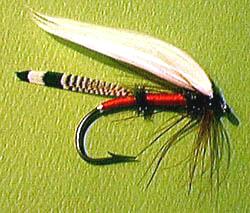
Thanks to Mike Croft.
|
 |
Hook: |
A standard length sproat hook size 10-2. |
Thread: |
Black. |
Body: |
Back 1/4 peacock herl, 1/2 red floss, 1/4 peacock herl. |
Tip: |
Red floss. |
Tag: |
Silver twist (fine). |
Tail: |
Barred Wood Duck. |
Wing: |
White goose or white turkey. |
Hackle: |
Coachman Brown |
| Tying Instructions:
- Tie in about a four inch piece of silver twist on the underside of the hook. Wrap thread back to a line directly above the end of the underside of the barb.
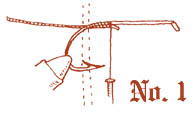
- Wrap enough turns of the twist so that the tip ends at the front of the underside of the barb (refer to the drawing). Tie off the twist on the underside right next to where you started the twist. Trim off excess.
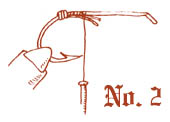
- Tie on a strand of red floss, and wrap it back to the tip, then back
to the original tie in point. Make sure you cover all the thread and
twist as you go. Trim off extra. Note: this should end right above the
point of the hook.
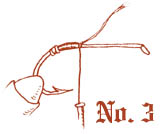
- Take one wood duck feather and pet it out to the side until the tips
of the barbs form a right angle to the barbs themselves (see drawing).
Important: use enough barbs to equal twice the width of the tail!!! Cut
them off close to the quill.
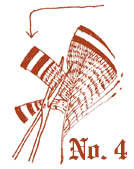
- Look at the drawing and fold the wood duck so that both outside
edges come together. Now you have a right side and a left side that are
the same and from one feather ... pretty neat, huh?

- Tie in your tail and remember that ninteenth century flies were tied
with longer tails than we like today. Trim off butts.
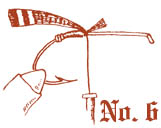
- Tie on peacock herl and wrap 1/4 up the proposed body length. Trim
off butt.
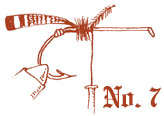
- Tie on red floss at the front and wrap down and back keeping your
floss to 1/2 the total body length. Trim off excess.
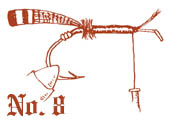
- Repeat the peacock herl and trim off butt.
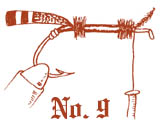
- Select a proper hackle and in the remaining 1/8 inch or so make
three or four wraps. remember it is a wet fly so don't over do it.
Trim the excess.

- Select two goose shoulder or turkey tail feathers. They will have a
natural bend in the quill so arrange them like they look in the
drawing. From the outside of the feather take a strip, as wide as you
want the wing, from both feathers.
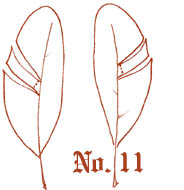
- Place these back to back ...

- ... and tie them on and trim off the excess. With glossy wet head
cement, put two coats over the thread. Waiting a day between applying cement coats.
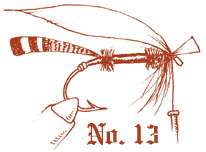
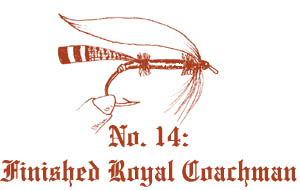 |
|













